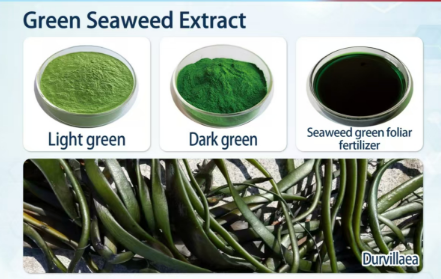Harnessing the Power of Algae: Sustainable Solutions for Agriculture
In the vast oceans, there exists a category of life forms that are simple and ancient, yet highly diverse and widely distributed – these are lower spore plants, also known as algae.
Algae first appeared a billion years ago and are one of the earliest life forms on Earth. As primary producers, algae generate organic matter through photosynthesis, release oxygen, and provide energy to marine animals at all levels through the food chain, thus maintaining the biodiversity and stability of marine ecosystems.

Durvillaea, belonging to the Phaeophyceae (brown algae) family, is a rare and highly prized blue food, classified as a globally restricted resource. It thrives in cold, nutrient-rich seas, with its
internal structure resembling a honeycomb filled with air, allowing for natural buoyancy. This Durvillaea exhibits remarkable resilience, enduring strong winds and waves. Known as a green, nutrient-dense wild
deep-sea plant, Antarctic bull kelp is one of the most valuable and rarest seaweeds in the world.
Due to its stringent growth conditions, Durvillaea can only be found in the unpolluted waters along the southern coast of Chile. It is renowned for its high concentration of alginic acid and is rich
in trace elements (such as potassium, calcium, and magnesium) and minerals, all of which are essential for plant growth. These nutrients help to enhance the overall nutritional value of crops. Alginic acid
is also an effective soil conditioner, improving water retention in soils, making it ideal for improving arid or poorly drained soils.

The main components of Green Seaweed Extract are derived from Durvillaea, containing natural bioactive substances and nutrients beneficial for plant growth and development, including algal
polysaccharides, phenolic compounds, mannitol, betaine, plant growth regulators (such as cytokinins, gibberellins, auxins, and abscisic acid), and trace elements like nitrogen, phosphorus, potassium, iron,
boron, molybdenum, and iodine.




 Mobile: 86-13012553585 15610518510
Mobile: 86-13012553585 15610518510 Phone (Fax):86-53283197178
Phone (Fax):86-53283197178 E-mail:
E-mail:  Add:No.918 Lingang 8 Road Huangdao District,Qingdao China 266400
Add:No.918 Lingang 8 Road Huangdao District,Qingdao China 266400

